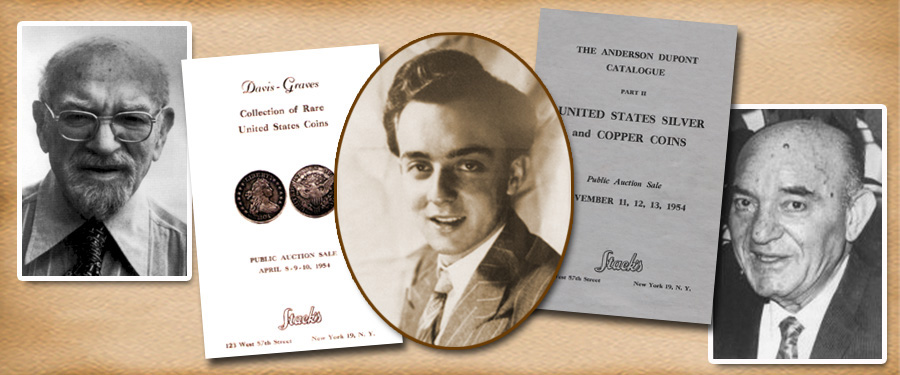
As 1981 came to a close the strength of the coin market seemed re-established, fortified by Auction ’81, and our Wayman and Bareford sales. To close out the year Stack’s had a two-catalog sale in December. One catalog offered 1,100 lots of United States gold, silver and copper coins, while the second featured the Western Collection of United States Gold Coins, comprising an additional 205 lots.
The first catalog was a comprehensive offering of U.S. coins in all metals that was really tailored for buyers looking to acquire some "missing links" for their collections – certain dates or mints that were needed. Because the sale offered a great variety of denominations and grades it attracted a good audience as well as a nice quantity of bid sheets. The second catalog of the Western Collection focused on United States gold coins of high quality in both Proof and Mint State condition. This special auction catalog included a complete collection of $3 gold coins in Mint State and Proof and a set of $4 gold Stellas consisting of both the Flowing Hair pieces from 1879 and 1880 and the Coiled Hair pieces of the same years. This set was sold as individual pieces. Following that spectacular offering was a range of gold half eagles from 1795 to 1834 and an almost complete offering of early $10 gold eagles. Then came Liberty Head double eagles, plus a virtually complete offering of Saint-Gaudens $20 gold coins, 1907 to 1932. Included were superb examples of 1920-S, 1924-D, 1924-S, 1925-D, 1925-S, 1926-D, 1926-S, 1927-S, the very rare 1927-D, 1929, 1930-S, 1931-D, and 1932. The sale concluded with the offering of complete silver and gold Proof sets of 1895 and 1903 (we were told that 1903 was the collector’s birth year). Each of the brilliant Proofs in these two sets were sold individually.
Though 1981 began with the scare that the bust in the silver market would endanger numismatics, it finished off with a bang. Collectors who had chosen not to become speculators in silver and who avoided all the hype that was found in advertising and promotions on a daily basis continued to enjoy collecting and add to their cabinets. They knew that a coin collection, formed with care and dedication would be more satisfying than "gambling" in the silver market. These traditional numismatists trusted that the run up in silver that started in 1973 would not last, that their collections would survive, hold their value and, eventually, advance in value.
We at Stack’s kept an eye on the situation with regard to silver speculation and did what we could to protect our business and our clients. While things were improving greatly by the end of 1981, the following year, 1982, would continue to be a test for all of us.





